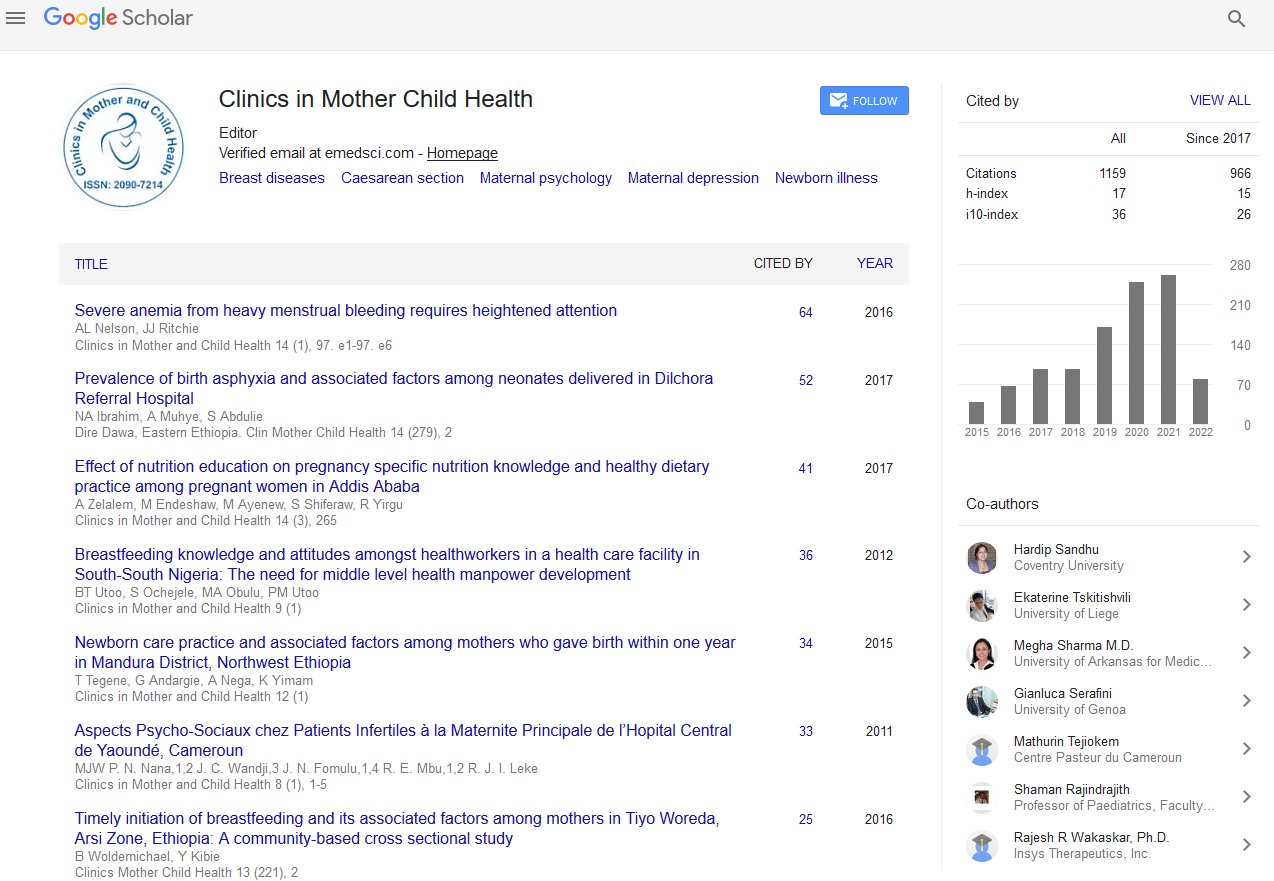Indexed In
- Genamics JournalSeek
- RefSeek
- Hamdard University
- EBSCO A-Z
- Publons
- Geneva Foundation for Medical Education and Research
- Euro Pub
- Google Scholar
Useful Links
Share This Page
Journal Flyer

Open Access Journals
- Agri and Aquaculture
- Biochemistry
- Bioinformatics & Systems Biology
- Business & Management
- Chemistry
- Clinical Sciences
- Engineering
- Food & Nutrition
- General Science
- Genetics & Molecular Biology
- Immunology & Microbiology
- Medical Sciences
- Neuroscience & Psychology
- Nursing & Health Care
- Pharmaceutical Sciences
Abstract
Does Labor Augmentation with Oxytocin Increase the Risk of Postpartum Hemorrhage? A Randomized Controlled Trial
Labour augmentation aims to shorten labour so prevent complications related to prolonged labour. There is evidence that a significant proportion of women with uncomplicated pregnancies are subjected to routine augmentation of labour with oxytocin in spite of the general rule that labour augmentation should only be performed for valid indications. Obstetric hemorrhage is one of the leading causes of maternal mortality in developing countries, accounting for 10%-30% of direct maternal deaths. The aim of the study was to compare between labour augmentation with oxytocin and no augmentation on the total volume of blood loss during vaginal delivery. The study included 250 cases admitted to the emergency department in El-Shatby maternity university hospital, group A (Oxytocin group) 125 cases received augmentation by oxytocin infusion using 2.5 IU oxytocin in 500 cc saline with a slow rate of 20-30 drops/minute, group B (Control group) 125 cases received only 500 cc saline. The amount of blood loss during the 3rd stage of labor and the 1st hour after delivery of the placenta (4th stage) have been estimated. Results showed that the total volume of blood loss in group A ranged from 100 to 700 ml with the mean of 230.9 � 99.3 ml, on the other hand it ranged from 100 to 650 ml with mean of 181.5 � 83.1 ml in group B. the calculated p value was 0.001, so there was a significant statistical difference between both groups regarding the total volume of blood loss, so we concluded that use of oxytocin in labor augmentation increase the volume of blood loss.


